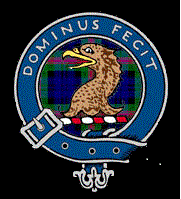History
refers to the Baird's of Auchmedden
|
||||
|
Auchmedden, Scotland is referred to in "Seventy Years of New Brunswick Life" by W. T. Baird.
"The Imperial Gazetteer of Scotland" edited by Rev. John Marius Wilson; A. Fullarton & Co.; London & Edinburgh; 1875, states : " ACHMEDDEN - see Aberdour, Aberdeenshire" "ABERDOUR, a parish on the north coast of Aberdeenshire. It is bounded by the sea, and by the parishes of Pitsligo, Tyrie, New Deer, King-Edward, and Gamrie. Its post-town is Fraserburgh. Its extent along the coast is about 7 miles; but its greatest length is not less than 10 or 11 miles. A portion, comprising about 800 acres, is separated a mile or so from the main body, by the intervention of Tyrie. The eastern part of the parish, or estate of Aberdour, is somewhat low and flat, with little diversity of surface. But the western part, or estate of AUCHMEDDEN, is elevated 200 or 300 feet above the level of the sea, and has a rugged surface, and a large proportion of moor and bog. Several long romantic hollows or deep ravines cleave the high grounds upward from the beach; and each, as they advance, branches off on both sides into lesser ones, which lose themselves among moors and bogs at a distance of about 3 miles from the sea. Little wild tumbling streams descend the ravines to the sea; and the mouth of one of these, called the Dour, gives the name to the parish. In the southern district is the ravine or den of Glasby, traversed by the northern head-stream of the river Ugie. The greater part of this side of the parish consists of moors and bogs, interspersed here and there with corn fields. The coast, especially to the west of the church, presents a rocky, precipitous, and lofty front to the sea, insomuch that, in its whole extent, are only three openings where boats can land, - one in the north-east corner, one immediately below the church, and the third at the mouths of the burns of Troup and Auchmeddan, where a small harbour once existed, but is now totally destroyed. Numerous romantic caves pierce the cliffs at and below the level of the sea; and the most remarkable of these, called Cowshaven, served as a hiding-place to Lord Pitsligo after the battle of Culloden, and runs up into the country "nobody knows how far." . . . The value of the assessed property in 1843 was L4,510. The chief antiquity is the remains of the castle of Dundargue, a place which made some figure in the civil wars of the 14th century, . . . The village of New Aberdour was founded in 1798. . . . Population of New Aberdour in 1861, 543. A small fishing village called Pennan stands on the Auchmedden part of the coast, and has about half-a-dozen boats. Population of Pennen in 1851, 168. . . . The parish church is at New Aberdour, and was built in 1818, and has 800 sittings. . . . " |
||||

e-MAILING ADDRESS: db@islands.cc